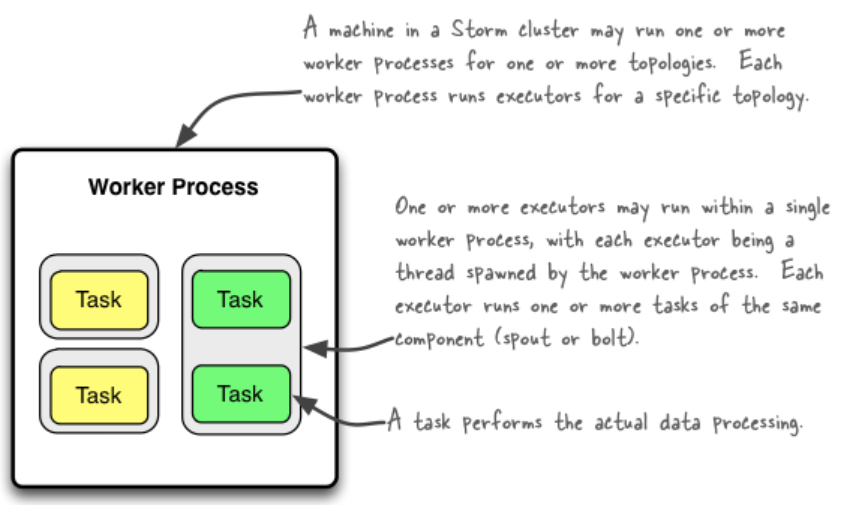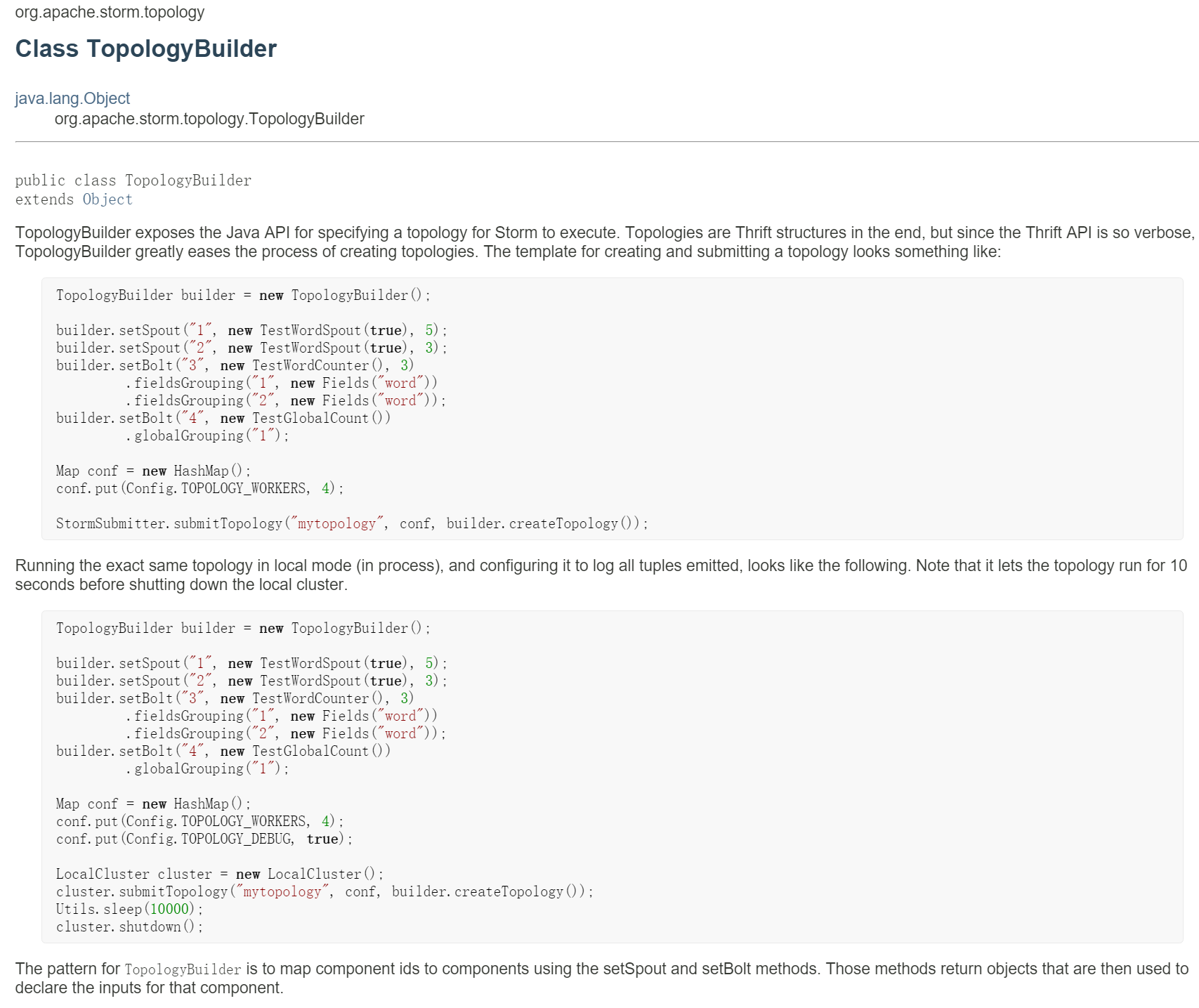Understanding the Parallelism of a Storm Topology
What makes a running topology: worker processes, executors and tasks
在一个Strom集群中,实际运行一个topology有三个主要的实体
- Worker processes
- Executors (threads)
- Tasks
下面是一张草图简单说明他们之间的关系:

A worker process executes a subset of a topology.
一个worker进程属于一个特定的topology并且可能运行一个或者多个executors
一个运行中的topology由运行在集群中的许多机器上的这样的进程组成
一个executor是被一个worker进程启动的一个线程。它可能运行一个或多个任务。
一个task执行实际的数据处理——在你的代码中实现的每一个spout或bolt执行许多任务。一个组件的任务数量总是不变的,这是自始至终贯穿整个topology的,但是一个组件的executors(threads)的数量是可以随时改变的。也就是说,下面这个表达式总是true:#threads ≤ #tasks。默认情况下,task的数量和executor的数量是相等的,也就是说每个线程运行一个任务。
Configuring the parallelism of a topology
注意,Storm中的术语"parallelism"也被叫做parallelism hint,表示一个组件初始的executor(threads)数量。
在这篇文档中我们将用"parallelism"来描述怎样配置executor的数量,怎样配置worker进程的数量,以及task的数量。
配置的方式有多种,它们之间的优先级顺序为:defaults.yaml < storm.yaml < topology-specific configuration < internal component-specific configuration < external component-specific configuration

下面是一个例子

上面这段代码片段配置了一个叫green-bolt的Bolt,初始数量为2个executors并且关联4个task。也就是说,每个executor量运行2个task。
如果你没有明确配置task的数量,那么Strom将用默认的配置来运行,即:每个executor运行一个task。
Example of a running topology
下面这幅插图显示了一个简单的topology。这个topology由三个组件组成:一个叫"BlueSpout"的spout和两个bolt,分别叫"GreenBolt"和"YellowBolt"。

代码如下

How to change the parallelism of a running topology

补充一个Java API

参考 http://storm.apache.org/releases/1.1.1/Understanding-the-parallelism-of-a-Storm-topology.html